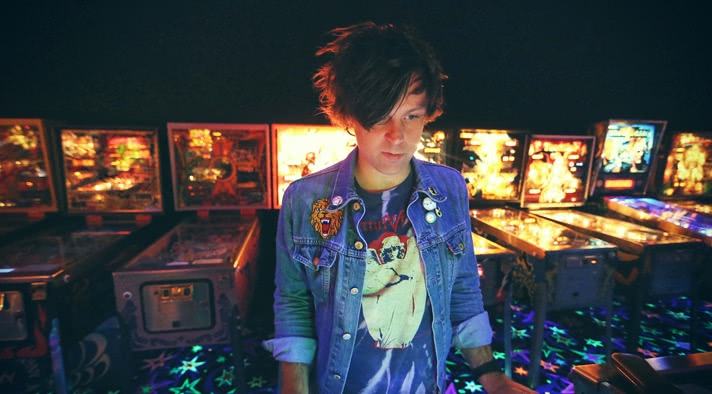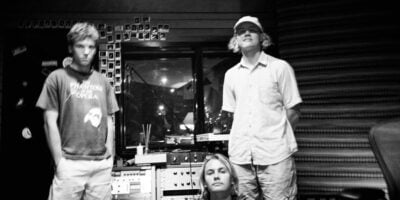At least according to the loose definition of the term, Ryan Adams is a solo artist. However, he’s never embarked on a record alone. Earlier this month the US alt-country savant released his 14thalbum.
Interestingly enough, it’s the first self-titled effort of his 15-year ‘solo’ career. The eponymous designation doesn’t signify that he’s run out of ideas. Rather, the title stems from the fact that, for the first time, Adams had complete control over the record’s construction.
“I made it in my own studio, I self-produced it and there’s no doubt that it’s what I wanted,” he says. “There was nobody standing in my way.”
Ryan Adamsfollows 2011’sAshes & Fire, which marked a return to lone billing after a five-year, five-record run playing with backing band The Cardinals. Accordingly, the Glyn Johns production was a stripped-back and largely acoustic affair. The self-titled LP is actually Adams’ second attempt at making his 14th album. For the first one, Johns again sat in the producer’s seat, but at the 11th hour Adams vetoed its release.
“The record was finished and it was pretty cool, but there wasn’t enough of an exploratory, celebratory feeling to it,” he says. “Because there was another producer at the helm, it just didn’t feel to me like I had done enough discovery. What eventually happened was I let some more time pass and created a new record at the end of another year after that session. I was finding a different sort of energy that, to me, felt like, ‘Oh, this is something with a lot of energy and power.’”
Even though the rejigged album was recorded in Adams’ own LA-based PAX-AM studios, it’s not pared back to the extent of its predecessor. In fact, electric instrumentation dominates the release as Adams openly indulges his arena rock influences. Ultimately, the autonomous recording scenario permitted Adams the necessary freedom to push into further reaches of his creativity.
“I [got to] stay in the studio longer enjoying recording and being a songwriter and someone that records,” he explains.“I have that freedom to do that as long as I like, until I decide that I want to go out and tour and release a contemporary record. My ego doesn’t necessitate that I need to go and be in front of people every year. I just want to create songs for me, which is what I do.”
For a headstrong individual – which Adams certainly is – having executive power is undeniably an upside of operating as a solo artist. However, with no bandmates to bounce off, nor a producer to evaluate the merit of the output, creative uncertainties are liable to start piling up. Not so for Adams.
“In my version of what art is, there are no wrong answers, nor is there any room for doubt,” he rebuffs. “It is a place free from an idea about commerce, it is a place free from an idea of opinion. What happens to it after is an entirely different thing – it’s an appropriation of a piece of art.”
The conception of creativity that Adams advocates here might even be a prerequisite for making quality artistic statements. However, staying focused on the art in its pure expressive form while maintaining a secure income isn’t a straightforward matter. Remarkably, even though Adams has been a professional musician since the late 1990s, he dismisses any capitalistic urge.
“It’s not just what I do for money, it’s what I already did. I had a job before, working in house development. I built new plumbing and I also worked on roofing. That was my job, but I made music on the side and came to where I couldn’t keep my job and also make music. I had to stop working the job to do music.
“I don’t have a quest to keep my job,” he continues. “My job right now is making music only because that’s just what I do all the time, but if it ever changed I would still just make as much music. Some people read all the time, some people play golf or some people like to watch TV. I make music.”
While Adams’ self-presentation is refreshingly free from anxiety, it’s doubtful that someone whose work hadn’t received constant approbation and yielded financial reward for almost two decades could make these sorts of statements. Nevertheless, when it comes to applying himself to his art, Adams’ Zen perception stays firm.
“I don’t change what I do to make money. I just do what I do and if it works, I do it more. It’s sort of a circular process. I don’t do stuff that I don’t want to do.
“I don’t know anyone, at least in my circle of friends, that gets creative and explores their unconscious mind and who they are in the hopes that the actual act of it is going to afford them something. Most of the people I know are compulsively creative because they’re artists and that’s just what they do. So their path in life and their path in their art is about exploring that.
“I don’t release records in that contemporary way where each one is a shot at somehow being a hit or making me a star or something,” he adds. “I make the work, it has a point to it, it’s a story on its own and I make it available to whoever wants it.”


































